Morocco is a kingdom of wonders that has so much to offer you – four different mountain ranges march across the land, while long golden beaches line a coast that borders both the Atlantic Ocean and the Mediterranean Sea. In the south of the kingdom you’ll find Morocco’s most famous feature – the spectacular, mesmerising, beguiling Sahara Desert. And throughout the land you’ll find lush oases, cascading rivers, and rich vineyards, it’s truly a kingdom that rewards the curious.
Morocco has plenty to see when it comes to urban adventures too – visit desert towns like Merzouga and Ouarzazate (Hollywood’s destination of choice when it comes to filming desert epics), historic Imperial Cities such as Fez and Rabat, and world famous Tangier, Casablanca and Marrakech. (source: muchmorocco-byMNTO)

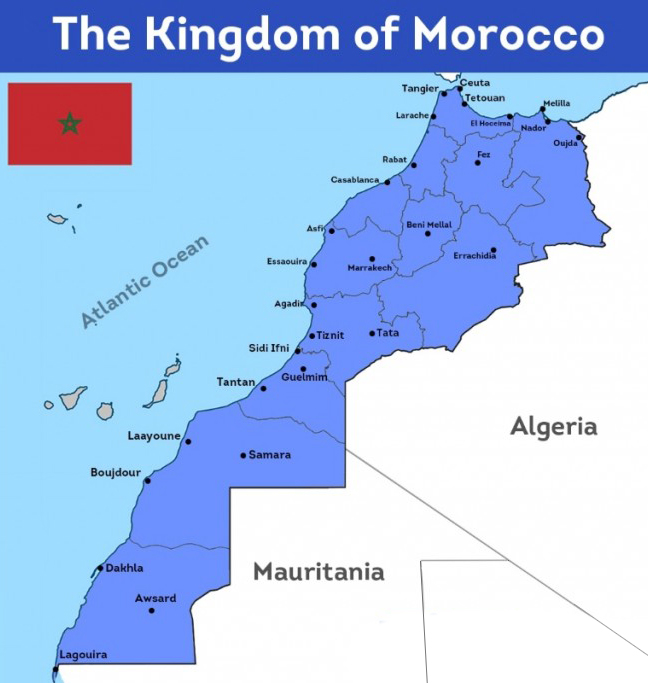
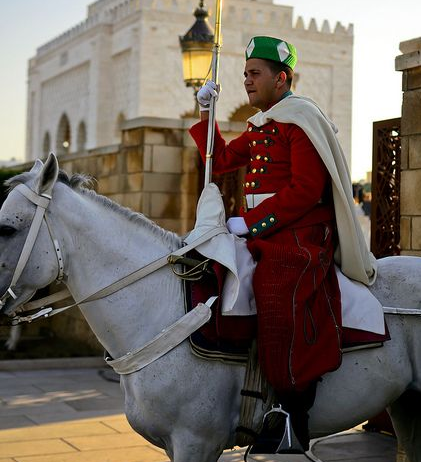
A melting pot of dynasties and cultures :
Each country has its own history: historical facts, events and important milestones that gave the country its true historical value. The history of a country is one of the events considered worthy of remembrance, which perfectly applies to Morocco. With several dynasties that have succeeded one another over the years: the Idrisside dynasty, the Almoravid dynasty, the Almohad dynasty, the Merinid dynasty, the Saadian dynasty and the Alaouite dynasty, Morocco has gained international consideration as a multicultural country, with several types of heritage recognized as World Heritage by UNESCO. Morocco is one of the go-to destinations for discovery lovers, the most fascinated by nature, history, the art of living and Moroccan hospitality. The experience gained during their journeys in Morocco leave them pleasantly satisfied with their stay.

A wonderland of landscapes
At the crossroads of Europe and Africa, surrounded by Mediterranean waters and opening onto the vastness of the Atlantic ocean, Morocco is a wonderland for nature lovers.
It is the “land of the distant sunset”, a destination rich in contrasts, with a two thousand year-old history, that will stimulate your curiosity. In these lands where several dynasties succeeded one another, you’ll discover remains of the greatest Mediterranean civilizations. In the north of the country, the Roman ruins of Volubilis stand.
In Rabat, pieces of architecture are evidence of the ancient French presence. Everywhere else, there are several treasures tracing the Muslim civilizations : the Kasbah of the Oudayas, the green expanses of the Menara gardens.
Between sea and mountains, desert sands and green plains, eye-popping panoramas are displayed to shower you with tranquility and natural beauty; enchanting vivid pictures with the richness of a brawling culture transport you into a most raw nature.

High Atlas
The High Atlas, commonly known as the “roof of Morocco”, is home to the highest peak in North Africa (Djbel Toubkal with 4,167 meters high).
Stretching over 750 kilometres in length, the massifs of the High Atlas separate three parts of Morocco: Atlantic Morocco, Mediterranean Morocco and Saharian Morocco. With its Amazigh and Berber character, its inhabitants practise livestock farming and agriculture, which also represent the main economic pillars of the High Atlas.
Apart from its tourist attractiveness, the High Atlas is known internationally not only for its national park for the preservation of natural biodiversity, but also for its archaeological sites.

Middle Atlas
The Middle Atlas, which is touristic, offers a diversity of landscapes. Rich in fauna and flora, it presents a colourful picture of lakes, forests of holm oaks, cork oaks and deserted volcanic plateaus.
Spread over 350 kilometres, the massifs of the Middle Atlas cover several regions of Morocco: Ifrane, Khenifra, Sefrou, Boulmane, Midelt, Hajeb, Taza and Beni-mellal.
Moreover, these massifs belong to four water basins: the Sebou basin, the Bouregreg basin, the Oum Errabiaa basin and the Moulouya basin. The first three water basins flow into the Atlantic and the last one into the Mediterranean.
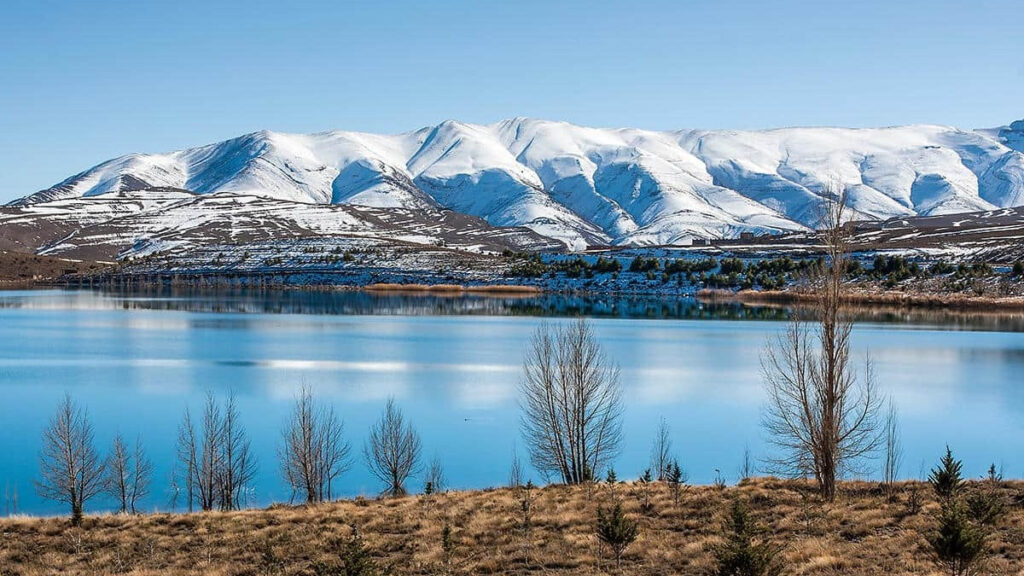
Anti Atlas
The Anti-Atlas, which is a chain recognized by its excessive aridity, hosts modest summits with Jbel Siroua (3 300 m) being the highest peak.
Like the High Atlas and the Middle Atlas, all its massifs has an astonishing diversity in terms of fauna and flora, geology and culture with Amazigh charm.
Its arid character is due to its proximity to the Saharan lands since its last rampart is just before the “Hamada du Draâ”.
Previously unknown, the crossing of the Anti-Atlas mountains represents today a modern circuit, rich in landscapes and leisure activities.
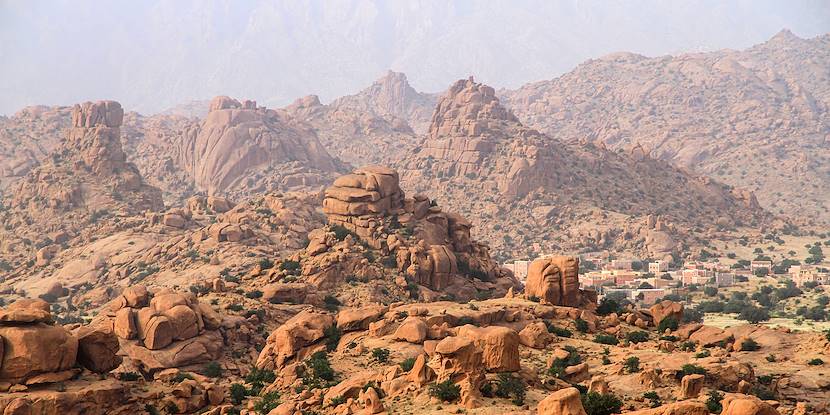

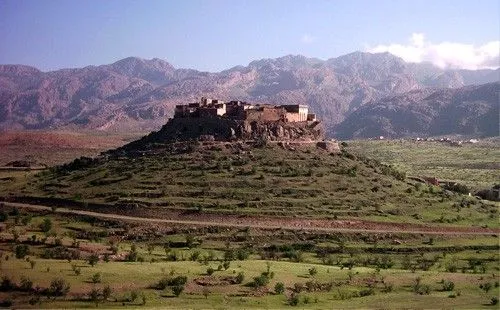
Rif
The Rif is a scenic and culturally vibrant area located in the Northern Morocco closer to Europe. Its people call themselves Jbala, that is “mountain people” and most of them are Berber, members of the original inhabitants of North Africa, who adopted the Arabic language from the 10th century, but which is inspired by the Berber Amazigh language and Spanish.

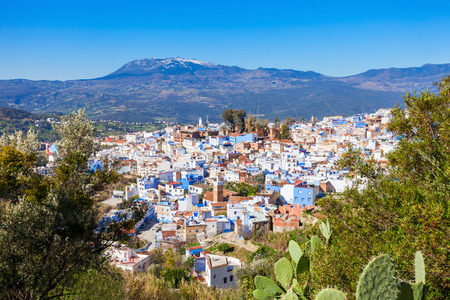
Atlantic Ocean
The Atlantic Ocean stretches more than 1,300 km to the west of the kingdom, offering a living space to several cities on its coast.
In the south of the Atlantic coast are Agadir, Tiznit, Dakhla and other cities, are rich in culture, history and leisure activities, due to their geographical advantage.
Up to the north, you’ll come across the cities of Essaouira, El Jadida, Casablanca and Rabat which are just as famous as those in the south.
An Atlantic coast, which consequently connects the Sahara to northwest Morocco, combines several cultures: traditional and modern; and offers a sweet spot for water sports lovers from all over the world.

Mediterranean Sea
The Mediterranean Sea stretches over 500 kilometres from the North-East to the North-West of Morocco.
One of the most outstanding features of the country is the calm azure blue waters and fine golden sands, which attracts many Moroccan and foreign visitors every summer.
From Tangier to the far east of Morocco, the sea breeze mixed with the Arab-Andalusian culture charms its visitors who are travelling far to stay in the most beautiful coasts of the world, to discover the hidden treasures of the wild beaches and to enjoy sunbathing on pebbled sands.
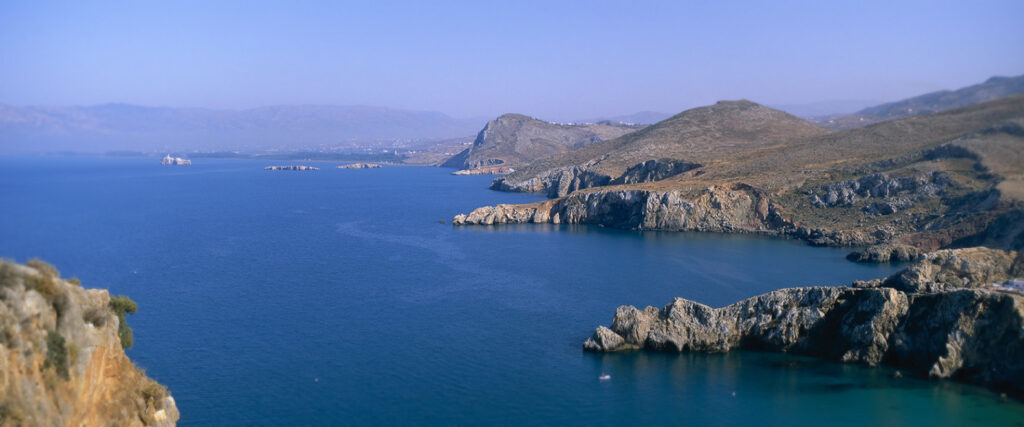
Merzouga desert
For a night under the stars or in a bivouac, for long hikes on the sand dunes and for a unique experience in the middle of the Moroccan desert, the Merzouga desert will shower you with its austere beauty.
Merzouga is one of the doors that open to the Saharan vastness, with its ochre-brown colour, under a beautiful sunshine.
At sunrise or sunset, you’ll enjoy a breathtaking landscape. In bivouac, you’ll enjoy all the folk festivities and the exceptional Saharan culture. On the back of a camel, admire all the wild landscapes.
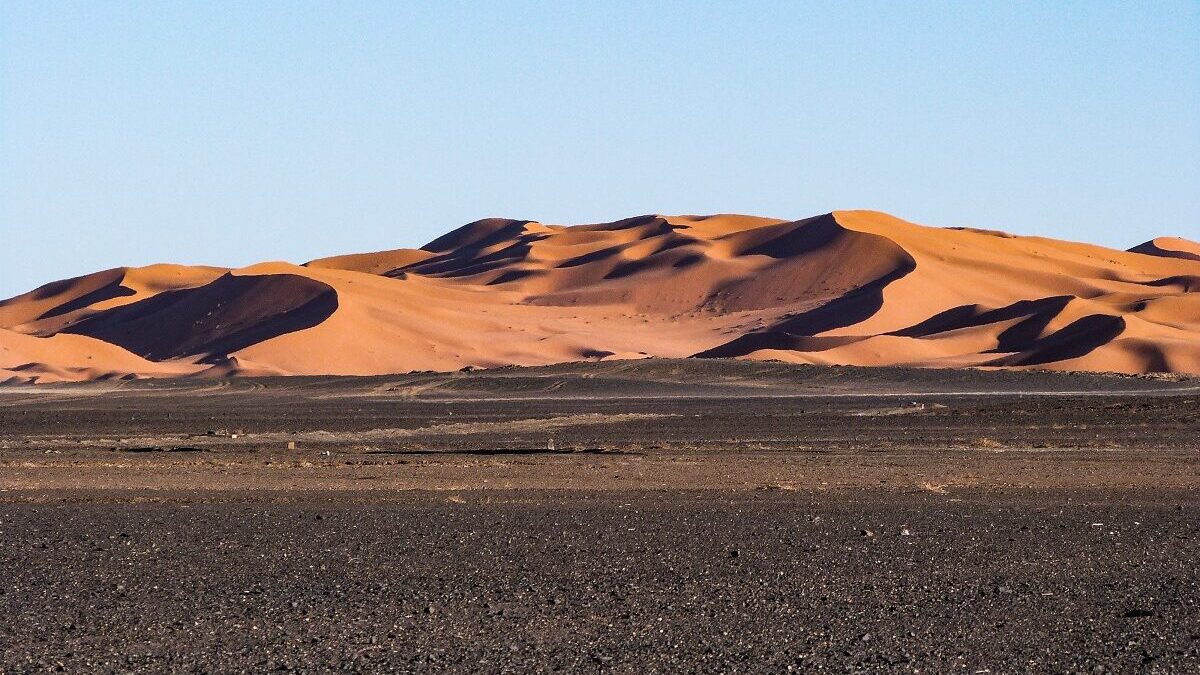
Dakhla
An absolute beauty to match every taste, Dakhla is a place for anyone wishing to indulge in the beauty of the sand dunes overlooking the Atlantic Ocean.
Sunny all year round, there is nothing better than swimming in winter or autumn under a 25-degree sun or enjoying the leisure activities of its internationally renowned clubs.
In Dakhla, PK25 and Foum El Bouir are the two famous beaches in the region. You can swim there, have fun, relax and enjoy all the activities of snow sports. here to check hotels in Dakhla
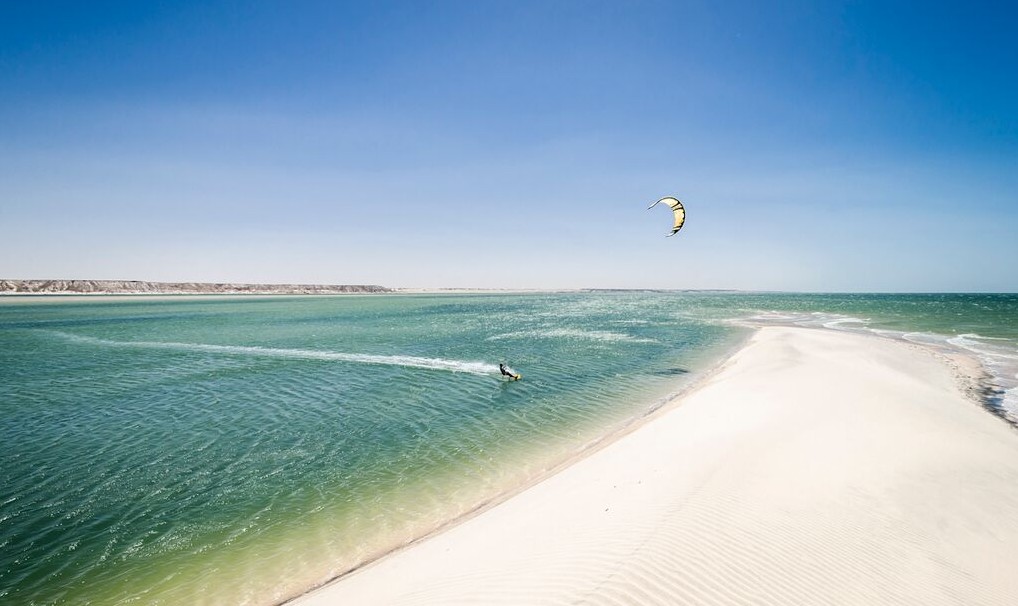

Medina, a multicultural place
Despite its Modern transformation, Morocco has never lost sight of its deep-rooted traditions. The magical Medina is on of the traditional Moroccan culture embedded in people’s daily life.
Typically walled, the traditional Medina invites you to explore its deepest treasures while meandering its narrow streets. Artisan shops, fountains, mosques …Hundreds of people live and work inside of its ochre walls, passing their know-how on to other generations.
In Fez, Tetouan, Essaouira and Marrakech, these car-free and most best conserved historic towns have quickly become World Heritage. Wheter it’s located in an imperial city, a coastal city, or in mountains, Medinas will take you back in history.
Explore its puzzling old districts, and dive into its magical atmosphere !
Medina of Fez
Fez El-Bali, the ancient city with a disctinct history, is a medina bubbling with bright colors, architecture and traditional craftsmanship. With its arabesque style and its historical drawings, Fez tells you the story of the early Moroccan dynasties footprints, leaving your own imagination run wild.
Founded by the Idrissides, Fez medina is home not only to numerous palaces, but also to the oldest university in the world, Al-Quaraouiyine. Strolling through its streets is a chance to take advantage of the smallest architectural detail and handcrafted works of art, as well as an opportunity to immerse yourself in the depths of a city with an intellectual and spiritual character.
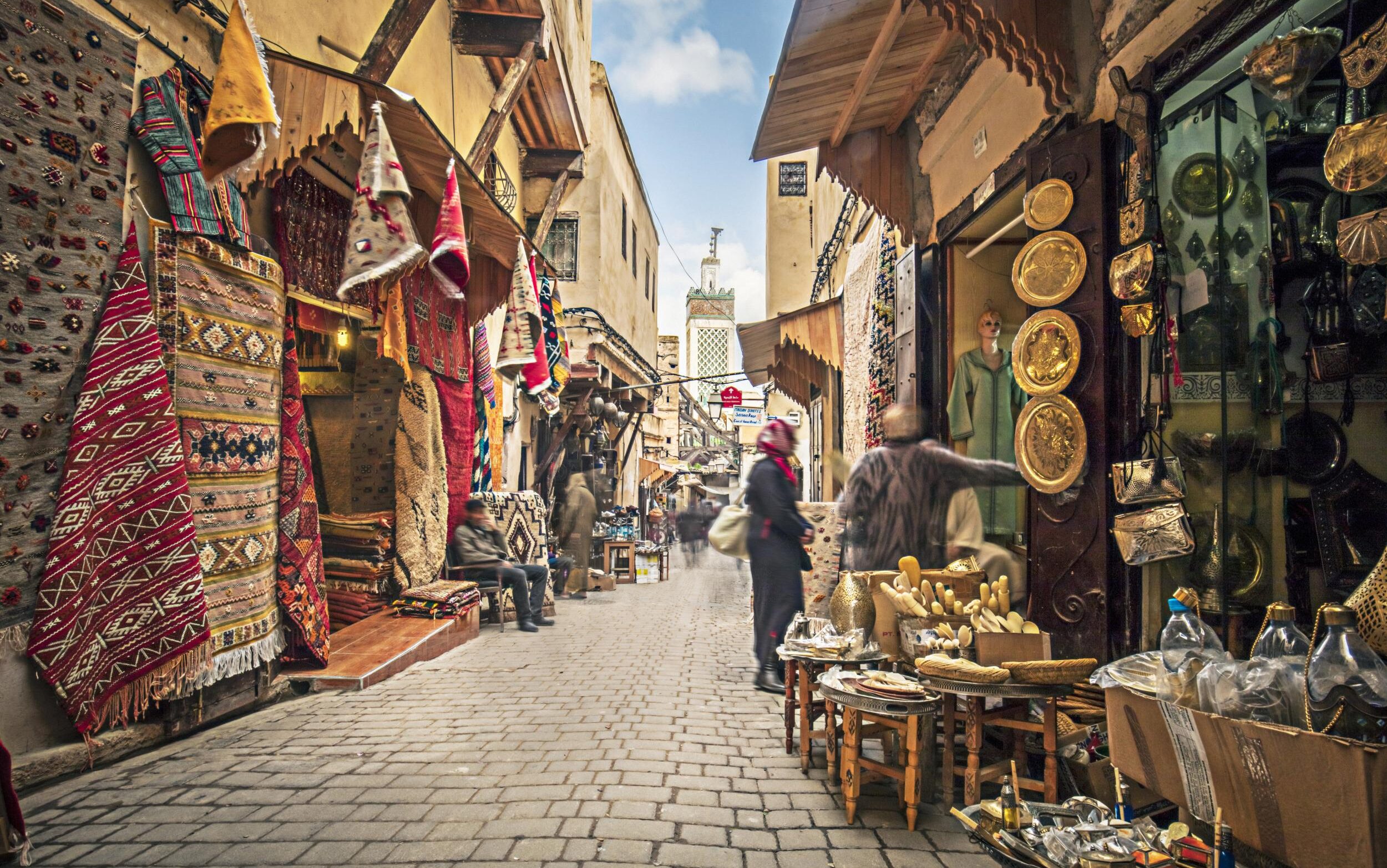
Medina of Tetouan
With a shape of a typical Kasbah, the medina of Tetouan, formerly called Titawin, has embraced Arab and Spanish while keeping the core aspects of its heritage and culture.
Its intertwined alleyways hums to the rhythm of the exogenous Spanish traditions that have taken place. Let yourself dive into a sea air mixed with the songs of the birds, and taste the charm of its treasures as well as the particular selling atmosphere in its souks.
The old medina also offers its visitors an ethnographic museum and an archaeological museum, which protect the most precious treasures of the city.

Medina of Marrakech
Just like the other medinas of Morocco, the World heritage medina of Marrakech, is the most historic and most visited district of the city. Beautifully surrounded by walls, forming several gateways, it is the beating heart of the “ochre” city.
Not far from the entry, the charming Koutoubia mosque built under Almoravid dynasty’s reign, is located in the southwest Marrakech Medina near the so called Jemaa el-Fna.
Surrounded by gardens, this emblematic figure served as a model for the La Giralda mosque in Seville.
As you stroll in its traditional quarters, you’ll find bazaars, traditional souks, museums, Riads, and café terraces that will make you enjoy its particular activities.
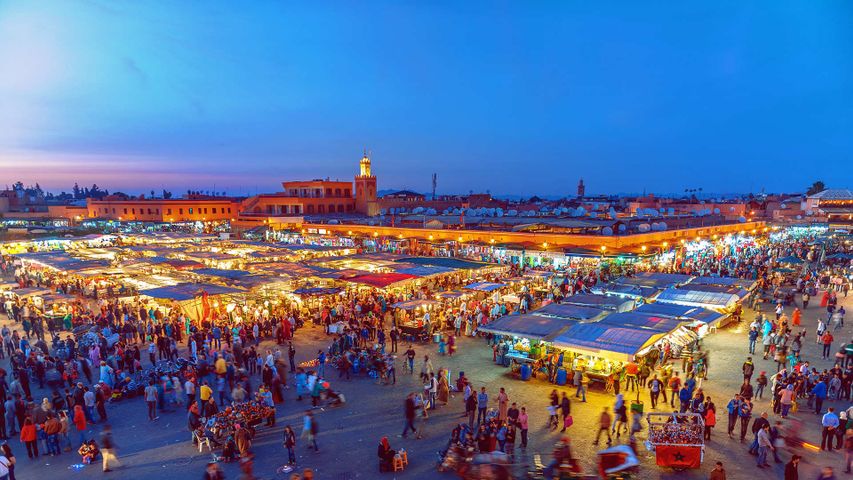
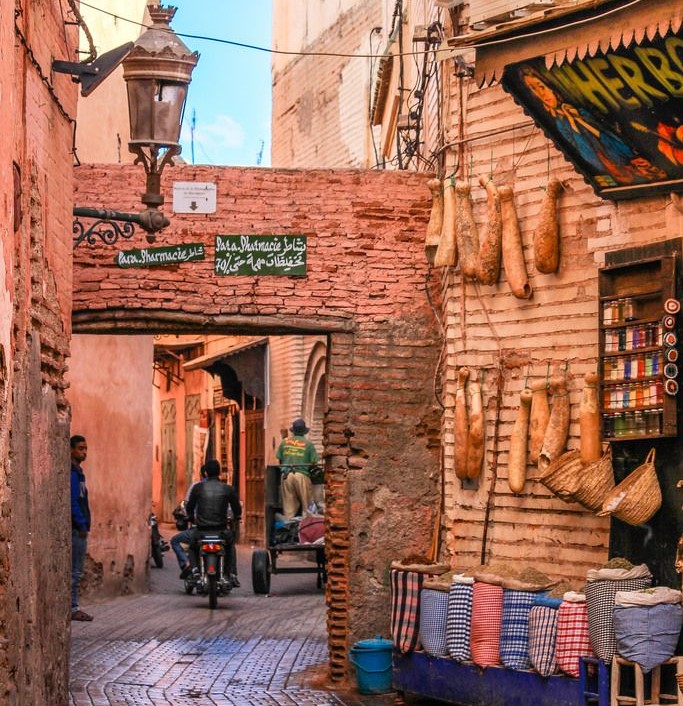
All these places give access to the Jamaâ El Fna square, which is magically transformed into an open-air theatre as the night falls.
Endowed with a strong tourist potential, the medina of Essaouira is an excellent tourist destination.
Recognized as a UNESCO World Heritage since 2001, Essaouira is a splendid city with historical streets and houses. Also known as the “Mogador”, this mid-18th century fortified city is perfectly sealed and enclosed by a Vauban-style wall, with a kasbah that cannot be overlooked.
A fresh breath with the Atlantic Breeze, and the beautiful sights of the city, offers its visitors a comfortable pace in its narrow streets, its romantic ramparts, its cultural wealth and its numerous art galleries.
Go exploring the beautiful landscape with Portuguese drawings on the buildings, and taste the charm of the magnificent sights of La Skala. Don’t forget to visit the port and the El Mellah district to immerse yourself in the history of this coastal city.
Medina of Rabat
Being the beating heart of Morocco’s capital, the old medina of Rabat city will shower you with its charm. Embeded in the hustle and bustle of a modern city, its cultural aspect emerges from its narrow streets, fortified walls, Kasbah and souks. A culture that covers all the architectural details, the daily lives of the inhabitants and the arts and crafts.
Soak up in the history of the Kasbah of the Oudayas, city of the Andalusians expelled from Spain by Philip III, with its bluish streets similar to those of Chefchaouen. Also visit its Souika street and its Souk Sebbate for a total immersion in traditional craftsmanship with the scent of leather.
The « rue des Consuls » avenue shows a different setting: a marvelous painting of multicoloured carpets that symbolizes the city’s wealth of craftsmanship. Don’t forget to visit the ruins of Chellah but also the Mausoleum of Mohammed V.
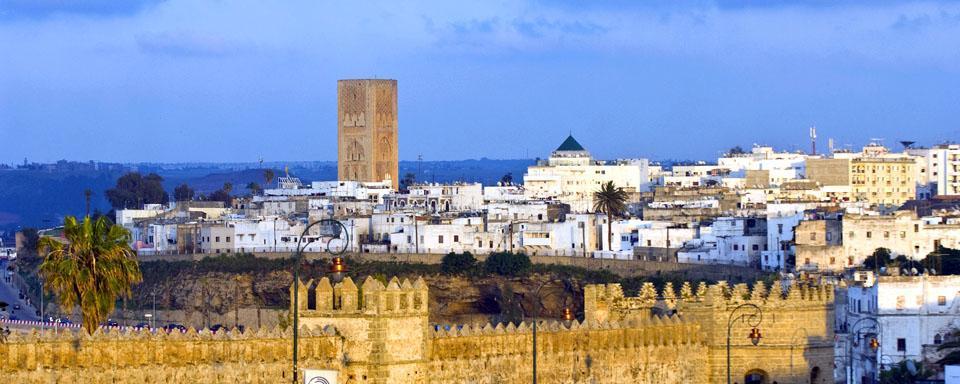
The beauty of stones
From the North to the South, Morocco is renowned for its breathtaking architecture and interwoven history and legends. Fortified walls, medinas, minarets, monumental gates or even ksar and kasbahs, the country is perfectly preserved. It allows you to discover the architectural treasures of Morocco.
Mausoleum of Mohammed V.
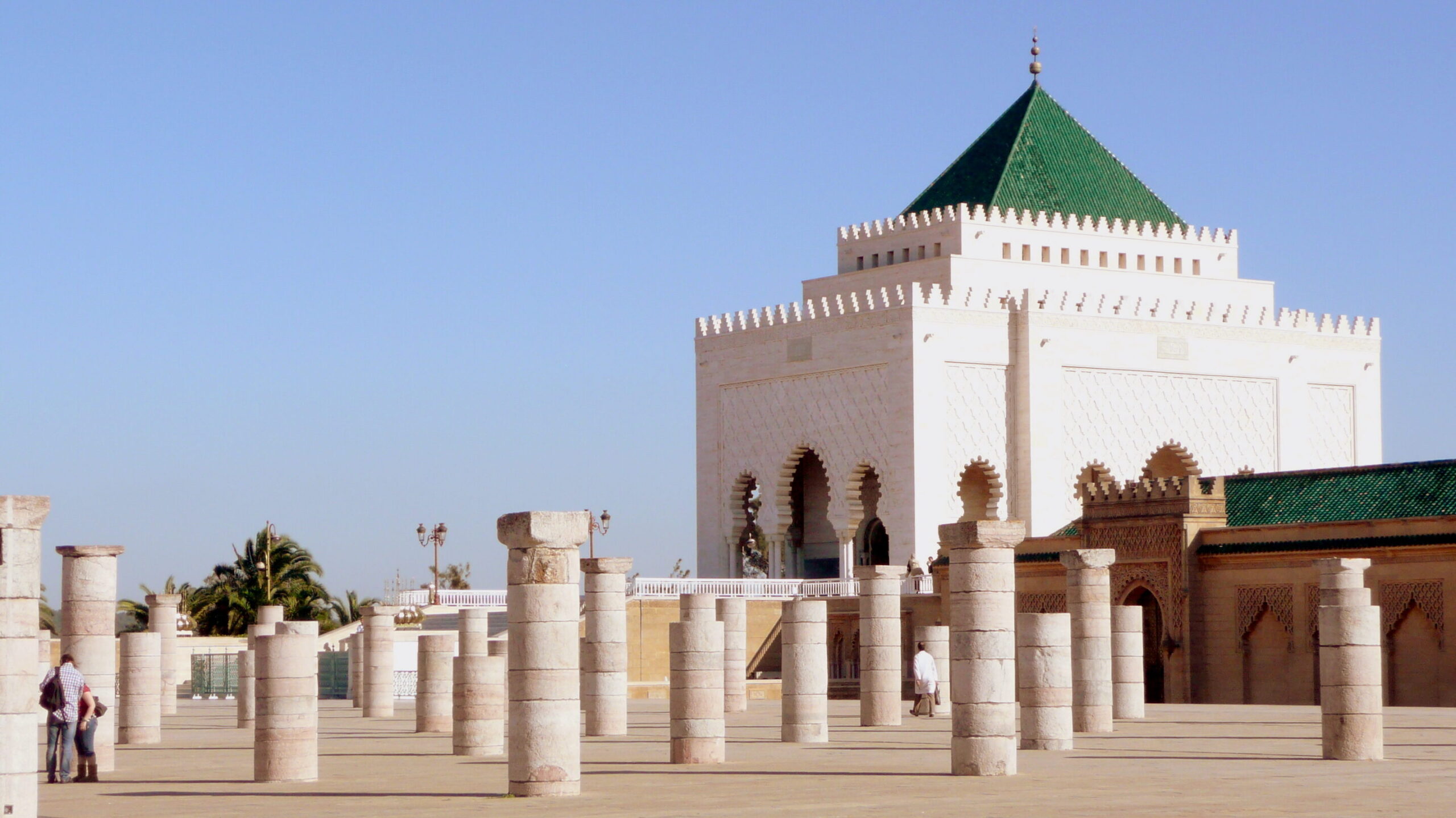
Mausoleum Mohammed V, home to the Royal tomb, is a small architectural masterpiece. Explore every corner of Rabat, starting from the Hassan Tower, where the mausoleum is well represented on its esplanade. Contemplate this glorious architecture, while feeling the fresh Atlantic breeze. Made of white marble, granite floors and green tiled roof, this architecture has stories to tell you about. Contemplate the different aspects of Moroccan craftsmanship made of gilded cedar and white Pakistani onyx. Cross the door to admire the stunning decoration with calligraphic friezes.
El Jadida, the Portuguese city
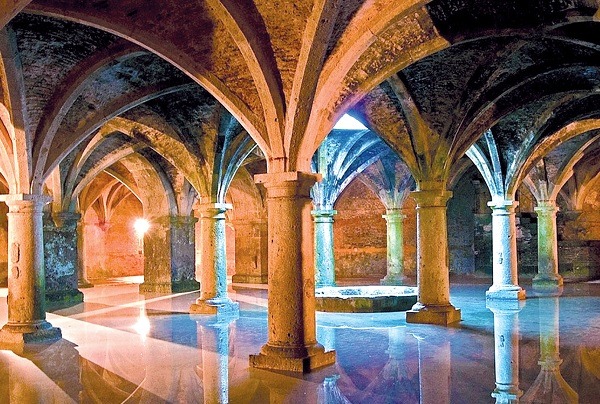
The city of El Jadida is full of historical sites that cannot be overlooked. The ancient Mazagan, follows the footprints of its early settlers : the Portuguese. The Portuguese cistern describes best these footsteps as it is a cultural heritage monument. This stunning monument, housed in the centre of the Portuguese city, was used as an arsenal during the Portuguese period, before it turned to a cistern, which was unwittingly discovered in 1916. Inside the cistern, you’ll see a poetic and mysterious atmosphere, created by spooky reflections and shadow-play. If you are tempted by this historical site, take the opportunity to stroll through the narrow streets of the city.
The Kasbah of Taourirt

If you are staying in Ouarzazate, a short hop to the Kasbah of Taourit is a must ! At first sight, it lookes like a huge sand castle. As you get a little closer to it you see a huge fortress: it’s the World heritage Kasbah of Taourirt. Built in the 17th century by the tribe of the “Glaoui”, this outstanding architecture is entirely made of straw and earth. The charming Kasbah invites you to contemplate the decorations that served for several films.
Hassan II Mosque
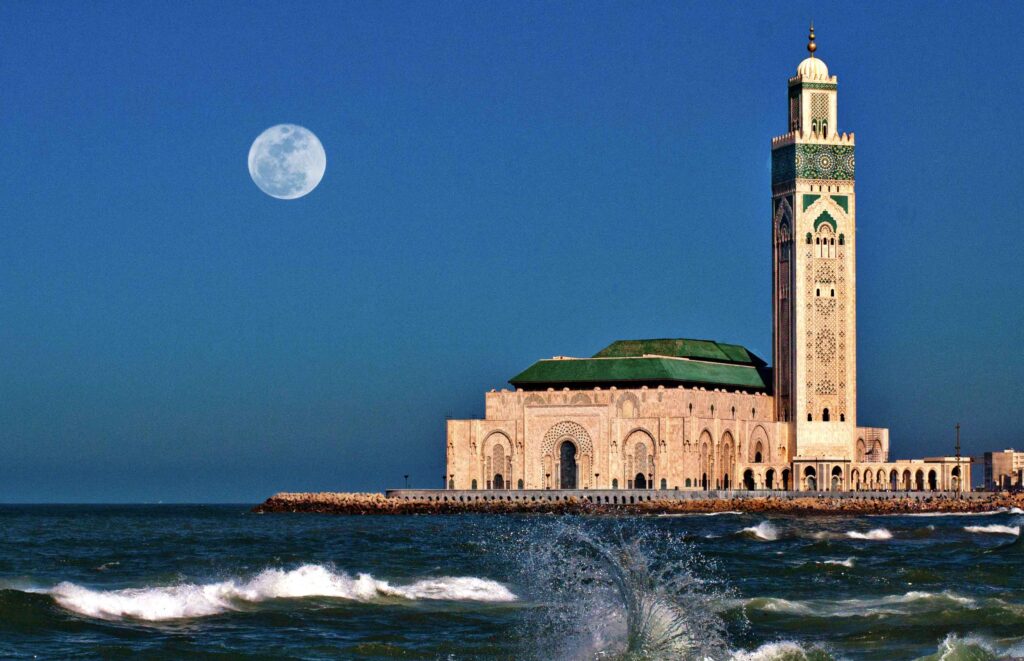
Hassan II Mosque is the largest mosque in Africa, and the 7th largest in the world. Half of the Mosque is built partly on water over the Atlantic ocean in Casablanca, by the late King Hassan II. With a minaret that reaches two hundred meters high, and being boarded by a Medersa (Koranic school), a library, hammams, and a musuem, Hassan II Mosque is a huge cultural complex. All admiration is brought to this building: frescoes and zelliges with geometrical motifs, painted and carved wood, stuccoes with inextricable designs, arabesques with drawn or calligraphic motifs. Which wouldn’t be possible without the talent and innovative thinking of Moroccan craftsmen.
The walled medinas, ksars and Kasbahs

Arabesque doors decorated with geometric motifs surrouding the Medina are the main entry : Fez, Meknes and Rabat are distinguished with these beautiful doors. In the south, the typical architecture of the ksars and kasbah will make you discover fortified villages made of adobe, erected near oases. Each region has its own architectural style. To each region, its protective walls. Moroccan architecture is an infinite a source of admiration!
Morocco archaeological treasures
Morocco has a long-standing and rich history. Traces of the past still lives on since pre-Roman and Roman, Phoenician, ancient and prehistoric, including traces of dinosaurs or rupestral. Everywhere, they testify to the rich heritage of the country and promise you an enriching stay.
Volubilis, the Roman city
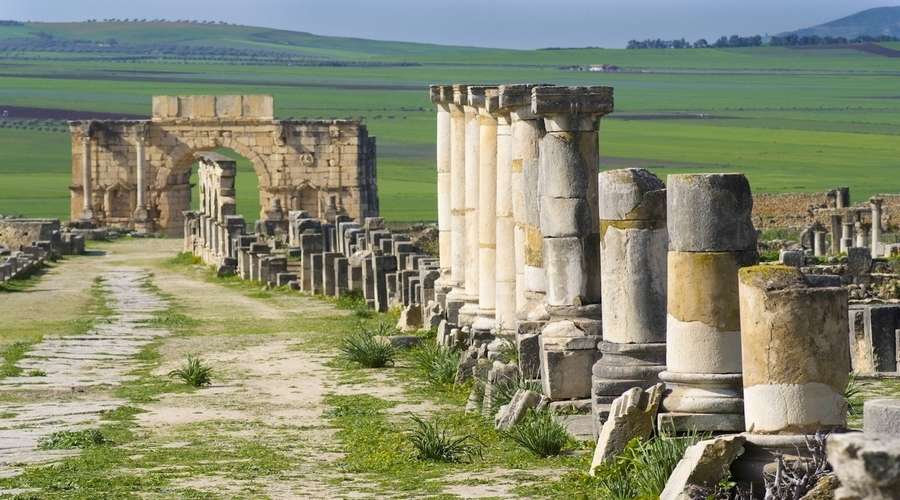
Located near Moulay Idriss Zerhoun, Volubilis is an archaeological site that was listed by UNESCO as World Heritage. Considered as the main Roman ruins of Africa, Volubilis symbolizes the multiple cultural influences in Morocco.
There are traces of several civilizations that have succeeded each other. Founded in the 3rd century B.C., it was the capital of Mauritania which was later occupied by the Romans with a total of 20,000 inhabitants.
The archaeological site Volubilis remains a wonder for lovers of ancient architecture, history of civilizations and ancient ruins. From Mosaics, carved columns, oil presses and various other buildings, these remais are just breathtaking !
Lixus, Hercules’ Golden Apple Garden

7 km from the town of Larache, on the Rabat-Tangier road, nestles Lixus. It is an ancient city which brims with vestiges that are symbolizing some aspects of ancient civilizations: the Carthaginians, Romans and Muslims took refuge there.
There are ruins of workshops that were used for salting and fishing, the ruins of an ancient cathedral, an amphitheatre and a mosaic depicting Neptune, who is the god of white water and springs.
According to Greek mythology, the city is the setting for one of the 12 labours of Hercules, which consists of picking golden apples in the garden of the Hesperides.
The necropolis of Chellah, a melting-pot of dynasties

The city of Rabat offers one of the most beautiful tourist sites of the city which is the Merinid necropolis of Chellah, located 2 km from its center. Listed by UNESCO as World Heritage since 2012, many visitors come to discover this city built on the ruins of the ancient Roman city of Sala-Colonia.
Colonized by a flourishing vegetation and storks that made a home for themselves, there are several interesting remains : ruins of the Zaouïa, a minaret, tombs, flowered alleys and a large basin.
The Merinide Necropolis also hosts many events such as the Jazz Festival.
#source: MNTOportal#
Get in touch with us here !
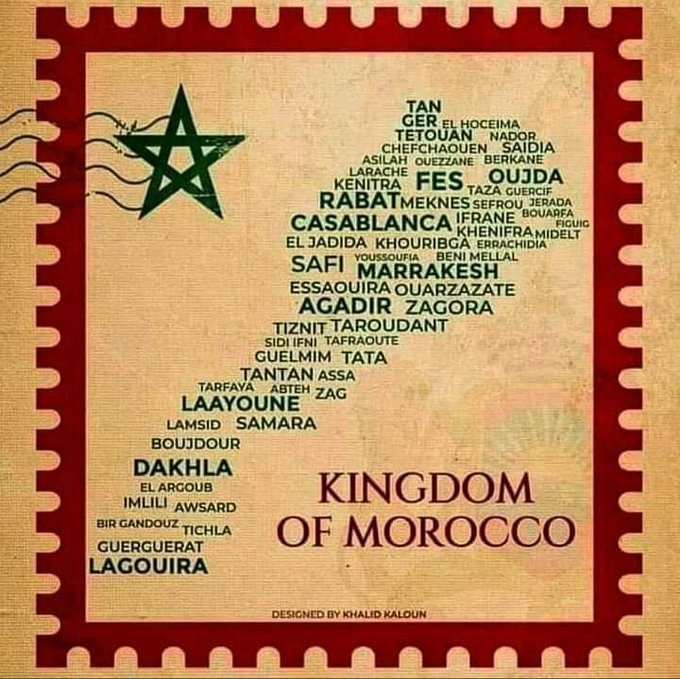
find lastest news on Morocco destination at welcome page : morocco travel agency
back to sections: event planner agadir, hotels morocco, morocco tours, tailormade tours marrakech, excursions agadir, marrakesh events
